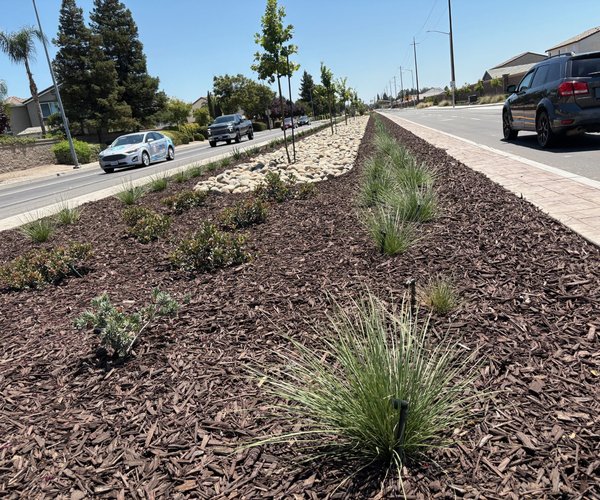Experts retained by the city are recommending a 283-bed shelter as part of a navigation center designed to get homeless off the streets.
Three options for the 8-acre site the city is pursing on South Main Street that 20 years ago was envisioned to serve as a complex for South County branch of the San Joaquin County Superior Courts and the Manteca Police Department were shared at a community workshop Tuesday.
All three options restricted access to the homeless navigation center to the Carnegie Court cul-de-sac on the east side of the property.
The portion along South Main is envisioned for seven separate 4-story complexes that would provide additional workforce affordable housing for Manteca similar to what exists at Juniper Apartments on Atherton Drive.
The ground floor on a number of the complexes would have 15,000 square feet set aside for build-to-suit office and commercial space as well as live-work studios. LPA consultants believe the complex could house 192 apartments — 72 studios, 72 one-bedroom units and 48 two-bedroom units.
The navigation center would involve 17,100 square feet of structures to house a common room for dining and TV use, a full service kitchen, intake and administration, offices for the city/operator, restroom and showers, an office shared by outside services that are available for staff to work to help get the homeless off the street, and classroom/multipurpose room/activity room.
The actual shelter area would include:
*7,700 square feet for a men’s dorm with 154 beds
*4,650 square feet for a women’s dorm with 93 beds
*3,600 square feet for a family dorm with 36 beds
*16 84-square-foot pallet homes for transitional housing
There would also be a 5,000-square-foot dog park, open space, and parking.
The meeting took place at the transit center and was publicized by the city to view via Zoom but technical issues garbled much of the livestreaming making it impossible for a number of nearby residents and business owners to hear what was being said.
There is no cost attached yet to the buildings let alone the annual cost of operation once a shelter and homeless navigation center is up and running.
Costs will depend upon what the city ultimately decides to go with as well as the type of structures they will use — traditional permanent construction of Sprung Structures that use canvas-like materials to create large spaces for churches, gyms, and homeless shelters.
The City of Tracy is pursuing a similar operation to deal with homeless in their city. The first phase has a $6.2 million price tag. The cost is being covered with $2.56 million Tracy has obtained from federal Community Development block grants, Homeless Housing Assistance and Prevention grant from the state and part of their share of federal COVID relief fund.
The San Joaquin County Board of Supervisors last month covered the balance of the cost with $3.66 million of the money the county received in federal COVID relief.
Given the Tracy navigation center is going on land that city already owns, there is no land acquisition cists. It is going on the northern edge of that community near the shuttered Holly Sugar plant.
Manteca already bought
land through the RDA
The first expenditure for Manteca is to buy the site unless they can enlist the help of California State Senator Susan Talamantes Eggman to get legislation passed and lobby Gov. Gavin Newsom to sign so the city can “buy” the site for $1.
Councilman Gary Singh is serving as point for the city and is working with Eggman’s staff to make it happen.
The fact the city is buying the site at all has several nearby residents irked as they remember when a previous council sitting as members of the Manteca Redevelopment Agency bought the site for $2.6 million from American Modular in 2004 for the purpose of a South County criminal justice complex.
The purchase was made after conferring with the county regarding expanding Superior Court space. The complex was envisioned to have satellite offices for the district attorney and public defender as well as four to six courtrooms. The city was considering building a new police station adjacent to the complex.
Judges opted instead to replace the main courthouse in Stockton instead.
When the California Legislature pulled the plug on RDAs up and down the state in 2010 to divert property money to avoid making cuts to the state workforce during the Great Recessions, all RDA property that did not have an active project was ordered sold by the state that essentially took control of such property. The proceeds were required to proportionately be distributed among local taxing agencies based on their tax rates.
That means the city — should they procced — will again buy the property they bought once for $2.6 million. The state will allow the city first right to buy it at market value. Based on the last appraisal several months ago the price is now $1.6 million.
The supervisors last month granted $2 million toward the project. If the city succeeds with Eggman’s help to get the site for $1 that would free the $2 million to go toward structure costs.
Manteca taxpayers within the RDA boundaries are still paying off a 30-year bond that covered the original purchase of the property.
To contact Dennis Wyatt, email dwyatt@mantecabulletin.com






